SUMMARY
This is AI generated summarization, which may have errors. For context, always refer to the full article.
![[ANALYSIS] How the US derailed Philippine history in 1986](https://www.rappler.com/tachyon/2021/02/How-US-Derailed-PH-history-February-26-2021.jpg)
The EDSA Uprising was really the culmination of a US-orchestrated strategy to preemptively oust a hated dictator in order to forestall the ascendancy of the Left. The “uprising” of parts of the Manila-based middle class led by the opposition elite and rebel military men was an unexpected product of this broader strategy. The central role of the United States is now deliberately forgotten or minimized in the mythology of EDSA, but its derailment of a rising revolutionary movement had momentous consequences that played out over the last 35 years.
The National Security Strategy Directive (NSS)
During the first term of President Ronald Reagan, Washington’s biggest headache in the Asia Pacific was Ferdinand Marcos. His dictatorship was, in Washington’s eyes, creating an opposition movement whose central, dynamic force was the left-wing National Democratic Front (NDF). The assassination of Benigno Aquino on August 21, 1983, had awakened the middle class and brought some semblance of unity to the elite opposition, but the Left still had the initiative.
Pragmatists in Washington’s national security establishment were getting impatient with Reagan’s ideological approach towards Marcos — unwavering support simply because of the latter’s strong anti-communism. A loose “Inter-Agency Group” set up after the Aquino assassination moved to forge a common approach after Admiral William Crowe, Jr., chief of the US Pacific Command, came back from a visit to Manila with an alarming report on the growth of the insurgency. The result was a National Security Strategy Directive (NSSD) completed in November 1984 and adopted as policy in January 1985.
The NSSD was leaked to us shortly after it was drafted. The essence of the NSSD was its now classic formulation:
While President Marcos at this stage is part of the problem, he is also necessarily part of the solution. We need to be able to work with him and to try to influence him through a well-orchestrated policy of incentives and disincentives to set the stage for a peaceful and eventual transition to a successor government.¹
Should Marcos prove uncooperative, the NSSD recommended that Washington “send signals that non-cooperation in Washington, e.g. delayed disbursement of funds, delayed program approvals, negative votes in multilateral forums” and “discreetly publicize the fact that cooperation is not forthcoming on matters important to the welfare and security of the Philippines,” with the expectation that “these signals should increase pressure on Marcos from the public opposition, business leaders, and even his close associates.”²
At this stage, Washington’s approach was one of “cueing in to initiatives pushed by the business class and the middle class,” which were seen as the “ultimate arbiter of the succession.” Nor was the end the overthrow of Marcos. Rather, it was to force him to share power.³ “Ultimately,” as Undersecretary of State Michael Armacost was later to describe it, “our role was one of helping Marcos reach the right conclusions from events and developments.”⁴
Putting the screws on Marcos
Marcos was not cooperating, leading Washington to tighten the screws. At a large inter-agency gathering at the National Defense University in late July 1985, officials from the State Department, Pentagon, and the intelligence agencies heard a panel recommend that “while the United States should not work for the overthrow of Marcos, it should take an open view about his removal from office.”⁵ It was around this time that the pragmatists came around to a consensus that Marcos had to be really pushed to hold “free and fair elections.”
That was the message to Marcos that Senator Paul Laxalt brought to Manila in mid-October 1985, along with a toughly worded message from President Reagan that he stop “screwing up” the counterinsurgency effort. Then followed an orchestrated outpouring of administration statements that sounded an apocalyptic note. Typical of this was the warning to Congress of Paul Wolfowitz, Assistant Secretary of State for East Asian and Pacific Affairs, that “time is running out, but time is not being used well.” Only “dramatic action” would “turn back the tide of communist insurgency.”⁶
On November 3, in response to mounting pressure from Washington, Marcos dramatically announced on US television that he had decided to hold presidential elections sooner than 1987, when they had originally been scheduled. On November 6, on the occasion of a visit by Richard Holbrooke, the tough-talking former Assistant Security of State for East Asia, Philip Kaplan, Charge d’Affaires at the US Embassy, assembled key leaders of the anti-Marcos political parties and, according to a confidential Embassy cable,
emphasized the need for the opposition to get its act together given the limited time left before the campaign starts, if the election is going to be held on January 17 or some date soon thereafter. He said the US cannot get involved in the issue of the date of the election — this was something to be worked out in the Philippine political process. The charge emphasized that what we can do — and are doing — is to press for free and fair elections.⁷
The cable also revealed that “both the charge and Holbrooke…underlined the importance of avoiding being portrayed as anti-bases or soft on communism. These postures would not play well in the United States.”⁸
The State Department pragmatists had apparently come to the conclusion that an electoral victory by the elite opposition would be in the best interests of the United States. As early as February 1985, Ambassador Stephen Bosworth had cabled Washington:
If the opposition should succeed in uniting behind a single candidate, and that candidate should be elected president, what would be the overall impact on US-RP relations? Based on our frequent contact with most of the opposition leaders, our judgment at this time is that the opposition could be expected to act responsibly and that the US-RP relationship would prosper.⁹
The electoral campaign leading to the elections of February 7, 1986, provided an arena for mobilizing Filipinos in support of the candidacy of Corazon Aquino, widow of Benigno Aquino, Jr. The US strategy during the elections was, in the words of Michael Armacost, to “encourage the constraints” on Marcos by sending an observers’ delegation from the US Congress, encouraging western media coverage, and pressing Marcos to set up the legal framework for free elections.¹⁰
Less obvious to the public was US funding of various opposition initiatives. US government funds, for instance, went to NAMFREL.¹¹ This reincarnation of the citizens’ electoral watchdog body during the Magsaysay period was set up to neutralize Marcos’ Commission on Elections. US funds, Armacost also later revealed, also went to the Catholic Church-run Radio Veritas via the Asia Foundation, a well-known conduit of Central Intelligence Agency and State Department money.¹²
Even the cautious Pentagon exerted its own forms of political pressure. Given the widespread expectation that Marcos would use the Armed Forces of the Philippines (AFP) to steal the elections, Richard Armitage, Assistant Secretary of Defense for International Security Affairs, appealed to the military to disobey Marcos if he used them to subvert the electoral process:
The AFP would be faced with a supreme challenge during the electoral process. At stake would be nothing less than the credibility of the AFP and, in particular, the honor of its officer corps. The conduct of the Philippine military during this critical period would determine whether the AFP is, in fact, loyal to the Constitution and a true pillar of support for the democratic process, or whether the AFP is a more perverse entity, bent on a course which will accelerate the spiral of instability.¹³
The Left blunders
While the United States was actively intervening in favor of the opposition, the National Democratic Front acted out of character. Key to its rise in the previous 18 years had been a non-doctrinaire, flexible, and innovative approach to political mobilization and organizing. When Marcos called for snap elections, the NDF correctly saw that the US was behind the strategy and that the goal was to deprive it of leadership of the anti-dictatorship movement. But it then went on to cavalierly dismiss the elections as another “meaningless contest among reactionaries” after heated debate on the contention of some in its ranks that these particular elections were different and that people were, in fact, taking it seriously as a means to oust Marcos. The NDF leadership then made the fateful step of calling for a boycott of the elections, a move that elated the Americans. It was a major blunder, the key consequence of which was that the Left sat on the sidelines during the fast-moving developments that followed Marcos claiming “victory” in the February 7 elections.
The United States, however, nearly squandered this gift from the Left. In the critical period following Marcos’ theft of the February 7 elections, Ronald Reagan, still undecided on Marcos’ fate, hesitated, remarking that the elections had been marred by “fraud on both sides.” This brought to a boil the frustration of State Department and CIA officials with Reagan and the ideologues around him. Veteran diplomat Philip Habib was sent on a last-ditch effort to set up a “power-sharing arrangement” between opposition candidate Corazon Aquino and Marcos, but events could no longer be contained within the State Department script of an eventual peaceful transfer of power to the elite opposition.
EDSA: Things slightly go off-script, but ‘in a good way‘
On February 22, Defense Minister Juan Ponce Enrile, AFP Chief of Staff Fidel Ramos, and the Reform the Armed Forces Movement (RAM) staged their mutiny with an initial strength of only 200 out of 250,000 troops, after their plans for a coup were discovered by Marcos. Thousands of civilians, mainly from the middle class, rushed to Camp Aguinaldo on EDSA to protect the vastly outnumbered rebels after hearing the plea of Cardinal Jaime Sin that was aired by the US-financed Radio Veritas. Marcos was not, however, going to allow the civilians to stop his army from crushing the rebels and made preparations to move against them. He was prepared to shed blood. At that point, under pressure from the pragmatist of the national security establishment, Reagan finally relented and told his old, trusted ally to step down.
Shorn of the principal basis of his power — support from Washington — the hated dictator had no choice. With the Americans stepping into the power vacuum, on February 25, under cover of darkness, the shell-shocked Marcos and his entourage were ferried by US helicopters to Clark Air Base and from there to exile in Hawaii. “We played a constructive role in getting him out of the country,” Undersecretary of State Armacost recounted frankly later on: “He wanted to go North [Marcos’ stronghold in Ilocos Norte], but this would have provoked civil war since there were elements in the military still loyal to him.”¹⁴
‘A near thing’
The State Department and CIA pragmatists breathed a sigh of relief that Reagan, under pressure from them, finally cut his buddy loose. But it was a near thing. As William Sullivan, a former envoy to Manila, put it, they had “saved the Reagan administration from its own worst instincts and stopped it from snatching defeat from the jaws of victory.”¹⁵
Washington’s aim had been to derail the Left with an electoral strategy that would eventually transfer power peacefully from Marcos to the opposition. The plan went somewhat off-script, with the EDSA Uprising, but in the view of its authors, that was a good thing. Yet, the EDSA event would have been for naught had Reagan, warned that blood would be on his hands if he continued to stand by Marcos, not acceded to the pragmatists’ pressure.
To John Monjo, one of the State Department’s team that orchestrated things on the ground, “the coming to power of the Aquino government constitutes a setback for the insurgency because…[the] principal propaganda target of the communists, the Marcos regime, is gone.” Michael Armacost, Monjo’s higher up, for his part, boasted at a speech before a packed crowd of foreign service officers eager to listen to one of Washington’s major foreign policy successes in years: “Our objective was to capture…to encourage the democratic forces of the center, then consolidate control by the middle and also win away the soft support of the NPA. So far, so good.”¹⁶
Armacost thought he was in a session that was supposed to be off-the-record. I was mistakenly invited to the session and, bound by no such rules, I was happy to record all his damning remarks.
Denouement: The EDSA Republic
The success of Washington’s carefully orchestrated electoral strategy broke the momentum of the Left. Once a model of unity for the global Left, the Philippine Left came apart at the seams in the next few years, owing to political disagreements that were rooted in the decision to boycott the elections.
But looking back, the marginalization of the Left was perhaps not the only consequence of Washington’s electoral strategy. Was Philippine history derailed from a positive direction in 1986? Nobody knows what would have happened had the Left eventually won. But we do know that the EDSA Republic ushered in decades of economic stagnation, rising inequality, and poverty promoted by a US-imposed neoliberal program and a corrupt elite-controlled democracy where factions of the elite competed for power but formed a solid common front against social and economic reform.
In hindsight, the electoral revolt of 2016 that produced the Duterte presidency was an act of mass desperation against a failed system that resulted from an earlier US-managed electoral insurgency. It is, however, a cure that has turned out to be worse than the disease. – Rappler.com
Walden Bello headed up the Philippine progressive movement’s counter-intelligence efforts in Washington, DC, in the late 1970’s and early 1980’s as head of the Congress Task Force of the Philippine Solidarity Network. He and his colleagues created a network of contacts at the US State Department and the World Bank that resulted in a number of intelligence coups including obtaining the 1984 National Security Strategy Directive (NSSD) and 6,000 pages of confidential World Bank and IMF documents that formed the basis of the best-selling Development Debacle: The World Bank in the Philippines. This article is adapted from his 1987 book US-Sponsored Low Intensity Conflict in the Philippines.
––
¹ National Strategy Security Directive (NSSD), Washington, DC, Nov 1984.
² NSSD.
³ Michael Armacost, Speech at Foreign Service Institute, Rosslyn Virginia, April 23, 1986.
⁴ Ibid.
⁵ Nayan Chanda, “Dear Mr President…,” Far Eastern Economic Review, Oct 31, 1985, p. 17.
⁶ Paul Wolfowitz, Answers to questions at hearings of the US Senate Foreign Relations Committee, Washington, DC, Oct 30, 1985.
⁷ US Embassy, Manila, Confidential cable to the Secretary of State, Nov 6, 1985. This cable was leaked by State Department sources to the author, who provided it to the press.
⁸ Ibid.
⁹ Ambassador Stephen Bosworth, “The Opposition: Uniting or Fragmenting,” Cable to Secretary of State, US Department of State, Feb 1985.
¹⁰ Michael Armacost, Speech at Foreign Service Institute, Rosslyn, Virginia, April 23, 1986.
¹¹ Raymond Bonner, Waltzing with a Dictator (New York: New York Times Books, 1987), p. 408.
¹² Armacost.
¹³ Richard Armitage, Statement to the US Senate Foreign Relations Committee, Washington, DC, Dec 18, 1985, p. 1.
¹⁴ Armacost.
¹⁵ William Sullivan, Remarks at a conference on the Philippines sponsored by the Washington Institute for Values in Public Policy, Washington, DC, April 30-May 1, 1986.
¹⁶ John Monjo, “US Assistance to the Philippiness,” Statement to the House of Representatives Subcommittee on Asian and Pacific Affairs, Washington, DC, May 15, 1986.
Add a comment
How does this make you feel?
![[DOCUMENTARY] The Marcoses: Reclaiming Malacañang](https://i.ytimg.com/vi/nvcbLoMzSoU/hqdefault.jpg)
![[Just Saying] Marcos: A flat response, a missed opportunity](https://www.rappler.com/tachyon/2024/04/tl-marcos-flat-response-april-16-2024.jpg?resize=257%2C257&crop=277px%2C0px%2C720px%2C720px)
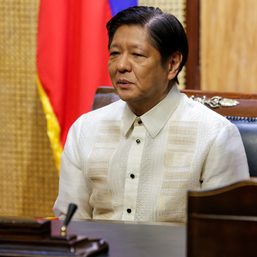

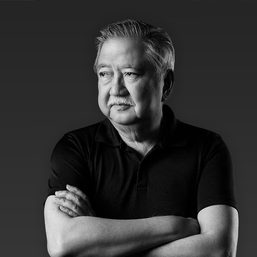
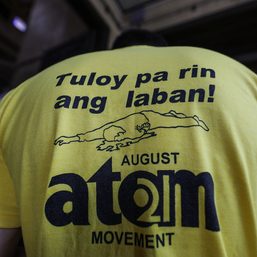
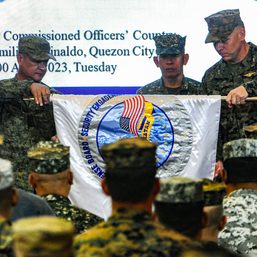
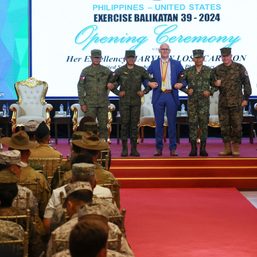
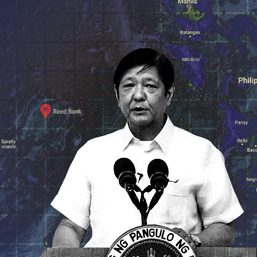
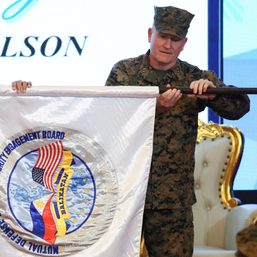
![[Newspoint] The lucky one](https://www.rappler.com/tachyon/2024/04/lucky-one-april-18-2024.jpg?resize=257%2C257&crop=536px%2C0px%2C1080px%2C1080px)
There are no comments yet. Add your comment to start the conversation.